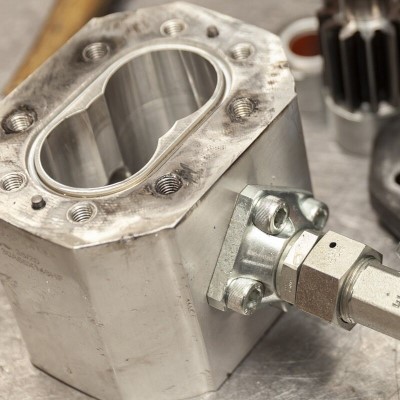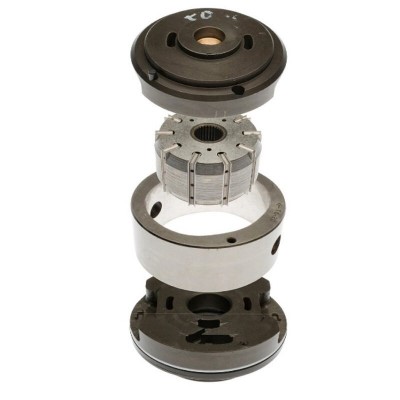How it Works: Hydraulic Pumps

What is a hydraulic pump?
Hydraulic pumps are at the heart of hydraulic systems, converting mechanical energy to fluid power by pushing and moving fluid.
How do hydraulics pumps work?
Though there are multiple types of hydraulic pumps (more below), they generally perform the same function – to push pressurized fluid through a hydraulic system.
Contrary to what you might expect, pumps themselves do not create fluid pressure. Rather, pressure is built as the fluid encounters resistance. That pressurized fluid then goes through control valves to a hydraulic actuator (typically a cylinder or motor), which converts the pressure into the mechanical energy that hydraulic systems use to complete various tasks.
What are the most common hydraulic pump types?
The three most common hydraulic pump types are gear pumps, vane pumps and piston pumps.

Gear Pumps
Gear pumps typically consist of two meshing gears fitted within a casing. As the gears rotate and mesh with each other, they create expanding and contracting chambers.
This motion draws fluid into the pump via an inlet due to reduced pressure and then pushes it out through an outlet as pressure increases. This positive displacement process ensures a steady flow of fluid that creates the mechanical energy needed to perform various functions of hydraulic equipment.

Vane Pumps
Vane pumps, designed with vanes on a rotating rotor within a casing, are another type of positive displacement pump found in hydraulic systems.
As the rotor turns, vanes slide in and out, creating chambers that draw fluid from the inlet (due to reduced pressure), compress it, and then expel it through the outlet.

Piston Pumps
Piston pumps differ from gear and vane pumps in that they use reciprocating pistons in cylinders to move fluid.
The pistons draw fluid during an intake stroke due to low pressure, then compress it during the compression stroke, creating high pressure. This high-pressure fluid is expelled through an outlet for system use.
What are some of the common issues with hydraulic pumps?
Not all hydraulic pumps are created equal. Each of the three types mentioned above have unique pros and cons.
For example, gear pumps, though relatively simple and economical, may struggle to maintain flow consistency because of their tendency to pulsate in high-pressure situations. They can also get noisy and aren't the easiest to service.
On the other hand, vane pumps are known to provide smooth and efficient fluid flow at higher pressures, making them ideal for applications requiring steady operation. They're also typically quieter and easier to service compared to gear pumps. But they also often cost more.
And piston pumps, while they are available in various designs (e.g., axial, radial and swashplate) to suit a range of unique applications, are often more complex and expensive than other types of pumps.
Major causes of premature pump failure
Up to 95 percent of hydraulic pump failures are caused by aeration, cavitation, contamination, excessive heat, over-pressurization and improper fluid.
Explore more about the lubrication challenges of modern hydraulic equipment through the below posts:
The Journey Towards a More Energy Efficient Hydraulic System